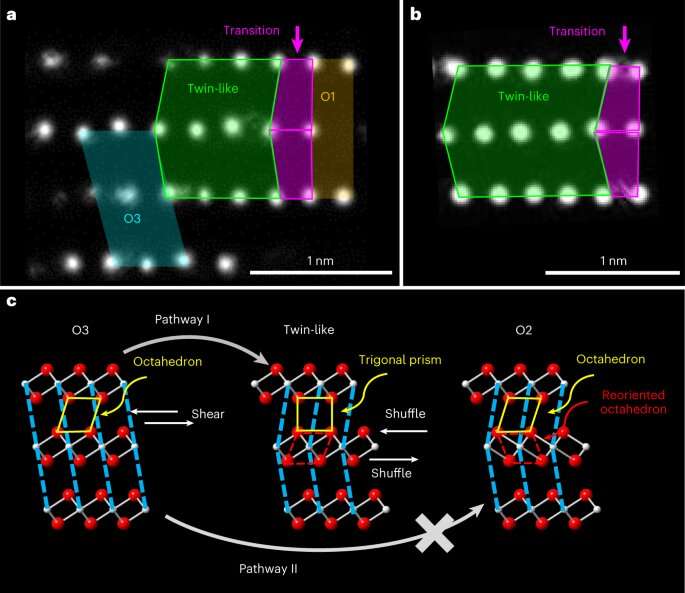This article has been reviewed according to Science X's editorial process and policies. Editors have highlighted the following attributes while ensuring the content's credibility:
fact-checked
peer-reviewed publication
trusted source
proofread
Researchers decipher atomic-scale imperfections in lithium-ion batteries

As lithium-ion batteries have become a ubiquitous part of our lives through their use in consumer electronics, automobiles and electricity storage facilities, researchers have been working to improve their power, efficiency and longevity.
As detailed in a paper published today in Nature Materials, scientists at the University of California, Irvine and Brookhaven National Laboratory conducted a detailed examination of high-nickel-content layered cathodes, considered to be components of promise in next-generation batteries. Super-resolution electron microscopy combined with deep machine learning enabled the UCI-led team to decipher minute changes at the interface of materials sandwiched together in lithium-ion batteries.
"We are particularly interested in nickel, as it can help us transition away from cobalt as a cathode material," said co-author Huolin Xin, UCI professor of physics and astronomy. "Cobalt is toxic, so it's dangerous to mine and handle, and it's often extracted under socially repressive conditions in places like the Democratic Republic of Congo."
But for the change to be fully realized, battery developers need to know what goes on inside the cells as they are repeatedly discharged and recharged. The high energy density of nickel-layered lithium-ion batteries has been found to cause rapid chemical and mechanical breakdown of LIBs' component materials.
The team used a transmission electron microscope and atomistic simulations to learn how oxidation phase transitions impact battery materials, causing imperfections in an otherwise fairly uniform surface.
"This project, which relied heavily on some of the world's most powerful microscopy technologies and advanced data science approaches, clears the way for the optimization of high-nickel-content lithium-ion batteries," Xin said. "Knowing how these batteries operate at the atomic scale will help engineers develop LIBs with vastly improved power and life cycles."
More information: Huolin Xin, Resolving complex intralayer transition motifs in high-Ni-content layered cathode materials for lithium-ion batteries, Nature Materials (2023). DOI: 10.1038/s41563-022-01461-5. www.nature.com/articles/s41563-022-01461-5


















